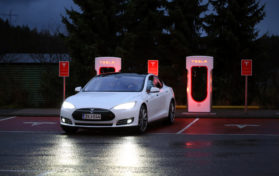
Take a trip through the local grocery, and consumers will find that everyday staples – milk, eggs, meat – are much more expensive than they were at the beginning of 2021. Meat is up about twenty percent of its price at this time in 2020; dairy products are up about eight percent. A recent study showed that Americans are spending about $3,500 more in 2021 to purchase household staples, and this is due to rampant inflation.
However, the Biden Administration has touted increases in jobs numbers as well as wage gains as a economic victory for the White House. Yet, a recent analysis shows that any wage gains Americans are enjoying is quickly eroded by the hot inflation the country is experiencing.
The Brookings Institute, a centrist think tank, has found that any wage gains see by frontline workers in thirteen of the largest and most profitable companies (including retailers, grocery stores, and fast food establishments) is diminished by fifty percent. Out of the thirteen companies included in the analysis, only two did not increase wages for their employees. Most of the thirteen companies offered significant wage hikes for their workers since January 2020. However, inflation has risen much more quickly than the wage gains. In fact, government reports show that consumer prices (overall) are up 6.8 percent from the same time in 2020. In fact, these surging prices have not risen so rapidly since 1982, when consumer prices jumped 7.1 percent from 1981.
The Brookings analysis reveals that inflation has risen almost eight percent since January 2020. During the same time period, wages have only grown by three percent. Had there been no rapid inflation, wage gains would actually be closer than ten percent. Inflation has weakened consumer buying power to the point where those who have seen pay raises in the last two calendar years feel as if they’ve had no raise at all.
Kroger was one of the grocery stores which the Brookings Institute analysis included. Kroger started 2020 with an hourly wage for workers at $15 per hour. By October 2021, Kroger had raised its hourly wage to $16,25 per hour. This extra $1.25 per hour gave workers roughly an eight percent raise. Due to inflation, however, Kroger employees would have to earn $16.08 per hour in order to have the same purchasing power as they did in early 2020. In plain terms, the $1.25 per hour raise really feels like a $0.17 per hour raise in October 2021. That’s a raise of just one percent.
The Brookings Institute’s analysis read: “Over the course of a month, this difference adds up.” For a full-time Kroger employee working thirty-six hours per week, the average raise offered the employee about $180 extra per month in January 2020. However, once inflation is factored into the equation, workers really only got the equivalent of a $25 per month raise.
In an era when politicians are constantly prodding corporations to provide a “living wage” to their employees, inflation is pushing the ideal number higher and higher. For a family with two working adults and two children, a living wage (the amount of income needed to provide for basics but no savings) is currently $17.10 per hour – and that figure is adjusted for inflation. Out of all the companies the Brookings Institute followed as a part of its analysis, only Amazon paid its workers a living wage by definition.
Walmart was second on the list of companies who actually paid workers a living wage adjusted for inflation. In January 2020, Walmart paid its employees $14 per hour; by October 2021, that wage had been increased to $16.40 per hour. Walmart did eliminate the quarterly bonus it once paid workers, however. When the raise Walmart employees were given was factored once more taking away their bonus, the raise that employees received was more like a two percent raise.
The companies analyzed within the Brookings Institute report employ about 5 million Americans, and included Best Buy, Target, Macy’s and McDonald’s, among others.





